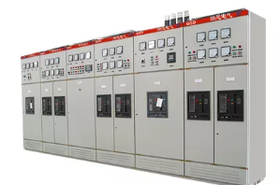Data centers touch most areas of our personal and business lives, and have been described by many as the “fifth utility”.
But a shift to the cloud, coupled with the ongoing adoption of internet-connected devices, and the increasing popularity of technologies such as artificial intelligence (AI), means there is a growing demand for data storage and processing.
Data center operators have no option but to continually expand capacity to keep up. This has implications for sustainability, given the huge amount of power required to run a data center, and the size of the carbon footprint this represents. And this, of course, is an area where data center operators are facing increasingly stringent regulatory pressure from governments across the globe.
These and other challenges need to be addressed for data centers to remain competitive, and to meet sustainability targets, while still delivering the flexibility, scalability, and quality of service their customers expect. The solution may lie, then, in a modular approach to the design, construction, and operation of data centers.
Challenging growth
The global data center market is growing rapidly. Worth $466bn in 2020, it is predicted to reach $948bn by 2030. The volume of data created and consumed across the world is growing too, and is expected to reach 175 zettabytes by 2030. But with this growth come challenges.
The amount of electricity required to manage this data is expected to grow by 400 per cent by 2030, with most of that energy consumed by powering and cooling computational hardware. This rate of growth is concerning, however, with various reports suggesting that data centers already account for between one and four per cent of global electricity use.
Environmental concerns
All of this obviously has a significant environmental cost. Recent research estimated that training an AI model resulted in 25 tonnes of CO2 emission, with a further 25 tonnes generated by the production of the computer hardware needed to build and train that model, and the energy required to run it once it was trained. In total, this roughly equates to 60 flights between London and New York.
It’s therefore unsurprising that data center operators everywhere are seeking more sustainable practices in an effort to reduce the size of their carbon footprint.
In January 2021, for example, more than 40 companies and trade organizations with links to the data center industry formed the European-based Climate Neutral Data Center Pact, under which they agreed to make data centers climate neutral by 2030.
The industry faces governmental regulation in this regard, as well. The European Union, for instance, has singled out large energy users – and the data center industry in particular – in proposed modifications to its Energy Efficiency Directive, stipulating the need for sustainability reporting and plans from data center operators.
Supply chain disruption
Other challenges have arisen since Covid. Most recently, the ongoing geopolitical crisis has left most industries faced with the rising cost and uncertain security of their energy supply while, at the same time, exacerbating many of the supply chain issues originally caused by the pandemic.
The recent period of growth has meant data center operations across all regions require the same resources, impacting the supply of raw and finished materials. But the effects of the global health crisis, followed so closely by the events in Eastern Europe, have only disrupted those supply chains further – particularly with regard to the semiconductors and base metals so vital to data center construction. And with no end in sight to the current political situation, the supply chain disruption seems set to continue for the foreseeable future.
Expanding outreach
Furthermore, data centers today are increasingly located outside of traditional clusters such as Frankfurt, London, Amsterdam, Paris, and Dublin, cities in which major companies are headquartered, or which are natural economic clusters with a wealth of telecom connectivity and ideal client profiles.
Instead, potential for growth and a low point of entry mean it’s becoming more favourable to build data centers in the secondary cities of the main economic nations, and in the capitals of smaller economic nations. But considerations around the availability of suitable sites, power, and engineering labour in these areas can prove challenging to any expansion plan. Indeed, many of these countries may not have the experience and personnel needed to help with the design, construction, and operation of a new data center. One of the answers to this, and to all of the challenges outlined above, lies in the concept of the modular data center.
Many benefits
The industrialisation, or modulization, of data centers, wherein prefabricated, pre-engineered, and pre-integrated units are delivered to site, is a flexible, scalable approach to data center construction which enables data center operators to increase capacity with reduced cost, complexity, and construction time.
Essentially a “plug and play” solution, modular data centers are prefabricated by experienced providers, thereby eliminating the need for qualified engineers to travel repeated to site. Designed to provide ample capacity for the required IT compute equipment, each modular unit accommodates aspects such as electrical, cooling, controls, and security requirements to provide an all-in-one system.
Its benefits are manifold. The ability to use pre-fabrication, integration, and testing off-site, for example allows data center operators to adopt a parallel approach to construction, reducing the need for materials and labour to be split between multiple sites. Not only is this vital in light of current supply chain disruption but it also contributes to a more efficient and environmentally responsible movement of materials and people.
Sustainable solutions
Today’s modular data centers can offer greater energy efficiency than their traditional, purpose-built counterparts, with the capacity for more advanced, sustainable solutions to be built in from the start.
Typically used to provide emergency power in the event of an outage, the inclusion of a grid-interactive uninterruptible power supply (UPS) can enable a data center’s backup power system to provide auxiliary power energy services back to the grid when required.
By putting data centers in full control of their energy, a solution such as this can allow operators to choose how much capacity to offer and when. It also means they can choose their price, allowing them to generate revenue as well as contributing to renewable energy.
In addition, the efficient use of sophisticated DCIM software can help data center operators to measure, monitor and model their power and energy performance to ensure little or nothing is wasted.
Return on investment
There are cost savings to be made, too. Building and maintaining data centers is expensive. Even in developed markets, land is at a premium. With limited space available in urban areas, where many of an operator’s customers are located, it can be difficult to build a large data center. A modular approach, however, enables a quicker and easier way for operators to scale their operations, expanding and adapting existing sites rather than sourcing new real estate.
Under-utilized or non-traditional buildings can be quickly repurposed to accommodate the growing demand for data storage and processing. Not only does this allow data center operators to remain competitive in an increasingly crowded market, but it means that any investment in expansion can be used efficiently.
Indeed, predictable CAPEX is critical. But, by with every specification pre-determined before the units are delivered, the modular approach means there are no surprises. The economies of the model are entirely predictable.
Looking to the future
Businesses today operate in a digital economy. As a result, the need for facilities to house compute, storage, and associated supporting digital infrastructure is growing tremendously, with a universal need for a faster, more resilient, safer, and more cost-effective way to house digital equipment and data.
A modular approach reduces the cost and complexity of data center design, construction, and co-ordination. In doing so, it addresses many of the challenges faced by data center operators today – from environmental concerns to supply chain disruption, and from the expansion beyond traditional clusters to the need for faster time to market and greater return on investment.
There will always be a place for a traditional brick-and-mortar approach but, in offering expert system engineering, quality, flexibility, scalability, safety, and sustainability, modular is a strong, viable option in the future of data center construction, and brings with it many advantages.
More on Eaton
-

Sponsored Practical strategies for managing power at the Edge
The time to improve power management at the Edge is now
-

Eaton acquires 49 percent stake in China’s Jiangsu Ryan Electrical
Nantong-based company specializes in dry-type transformers
-

Sponsored Eaton announces completion of its largest African installation to date
Intelligent power management company Eaton has announced the successful installation of a modular power system earlier this year at Africa Data Centres’ 10 MW facility


